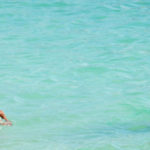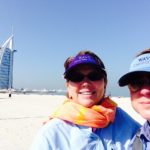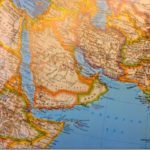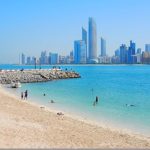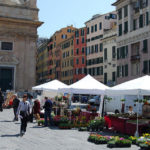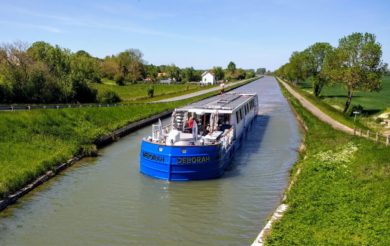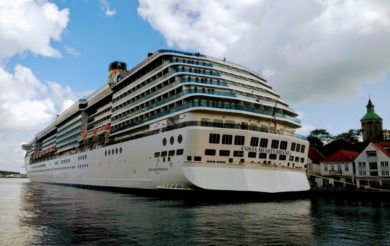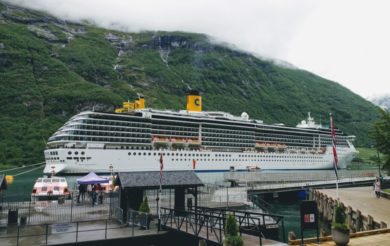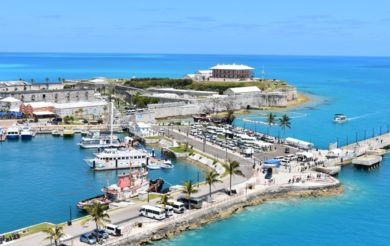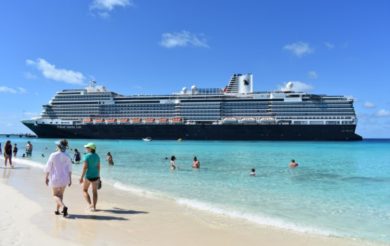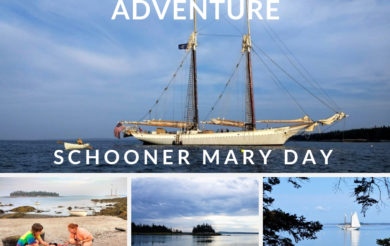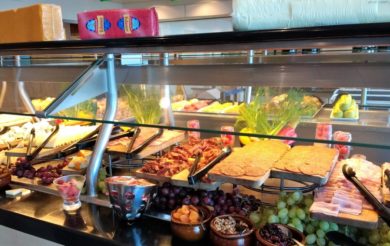Travel United Arab Emirates – Abu Dhabi The Second Time Around
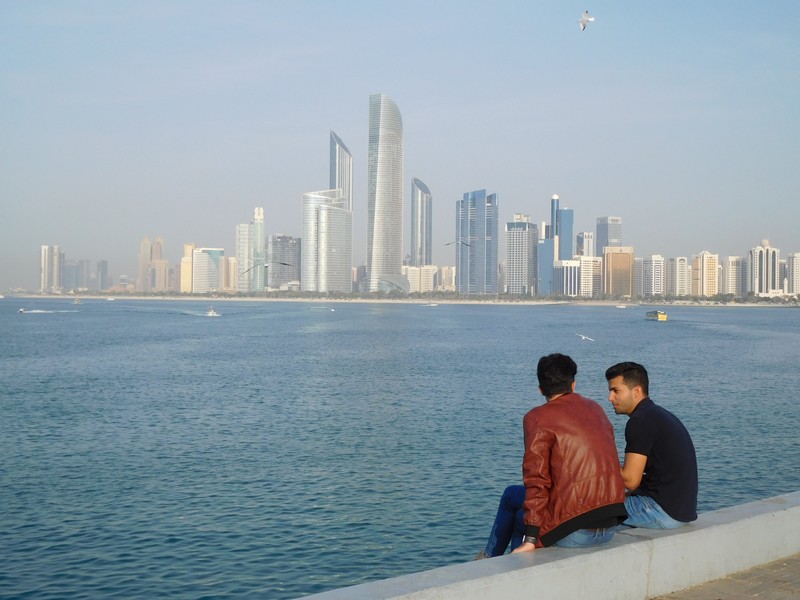
Travel United Arab Emirates – Abu Dhabi The Second Time Around
Travel United Arab Emirates – Abu Dhabi The Second Time Around
By Elizabeth von Pier
I’ve already visited many of the main tourist destinations in Abu Dhabi—the Grand Mosque, the Emirates Palace Hotel, Etihad Towers, Heritage Village, Yas Island. This time I’m ready to dig a little deeper, see and do some of the things that fewer tourists take in. And I’ve made a commitment to myself to meet some of the Emiratis, talk to them and try in some small way to bridge the gap between their Muslim culture and my Western ways. Since eighty-five percent of the population in Abu Dhabi are expatriates, it’s not necessarily easy to meet a native, but the weather is beautiful in January and I found many local people outside enjoying the waterfront and picnicking in the parks.
Abu Dhabi Falcon Hospital
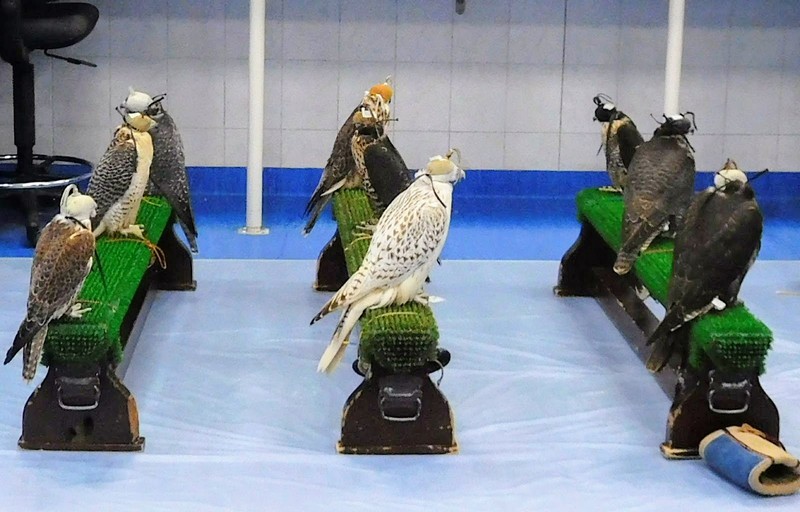
Abu Dhabi Falcon Hospital
Falconry is an ancient art that dates back to the 7th century BC here in the Emirates. At first, falcons served a practical purpose. They were owned by the desert nomads and trained to hunt rabbits, quail and other types of prey and provided an important source of food for the Arab Bedouins. Later, they were used by the wealthy for sport. Sheikh Zayed, the founder and first President of the Emirates, was an avid falconer.
Today the elite Emerati own falcons as a status symbol, paying $5,000 to $100,000 for the noble bird, depending on the breed. A strong passion and love develops between falcon and owner. Owners will spare no expense to keep them healthy, even when they are at the end of their normal life span of eighteen to twenty years. Some even have their own passports and it’s not unusual in the Middle East to see one of the beloved creatures traveling in the first class compartment of a plane with their owner.
The Abu Dhabi Falcon Hospital was founded in 1999 as the first comprehensive veterinary institution in the UAE to exclusively treat falcons. Today the hospital treats over 11 thousand per year and is the largest in the world. Patients come not only from the UAE but also from Saudi Arabia, Qatar, Bahrain and Kuwait.
As I sat in the waiting room before my tour started, I observed many distraught owners coming in for evaluation and medical care. All were men wearing long white dishdashas and carrying their falcons on their arms. They anxiously waited for an attendant, all the while comforting the falcon by stroking its breast. The “patients” were wearing soft suede head pieces that covered their eyes so they wouldn’t get frightened.
I spoke to one of the distraught owners, an expat breeder who hails from Germany but now lives here in the UAE. Unfortunately, his falcon was diagnosed with liver disease. Other owners were here for minor treatments like nail clipping as well as more serious procedures. But even something as seemingly simple as nail clipping involves anesthetizing the bird. And the owners anxiously await the outcome just as a parent would for a child.
Our tour took us through the falcon waiting room, outpatient care where we observed minor treatments being performed, the surgical suite, ICU, recovery, and extended care. We ultimately had the opportunity to hold one of these precious pets for photos.
Dune-bashing and a Taste of the Bedouin Heritage
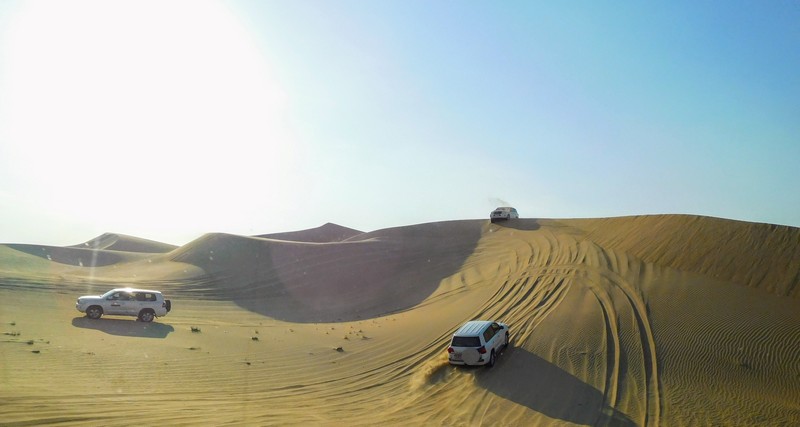
Dune-bashing and a Taste of the Bedouin Heritage
The day I went out into the desert proved to be a challenge to every part of my body, from climbing up into the massive four-wheel drive, to bracing myself as the handsome young man wove in and out of traffic on our way out of the city, to hoisting myself up onto the body of a camel, to squatting on low cushions while I ate dinner on a twelve-inch high table. But it was an experience of a lifetime and I strongly suggest it to visitors to the UAE.
I hesitate to mention the dune-bashing because it seems so politically inappropriate in this age of environmental awareness. But I was told that the dunes simply get rebuilt every night as the winds sweep across the desert. I’m inclined to believe it judging from the height and smooth peaks we crossed and skidded down.
This is a thrilling sport and I was very thankful for the skill of our driver in getting us out unharmed. It’s a little like riding on a roller coaster. We went straight up, then straight down. We barely managed to stay upright as we rose to the top of a dune, traveled across its crest, then “fell off” the 60-degree slope and skidded down its side. Fine sand pummeled our windshield and momentarily blocked our view. I was the “lucky” one to be sitting in the front seat with the driver.
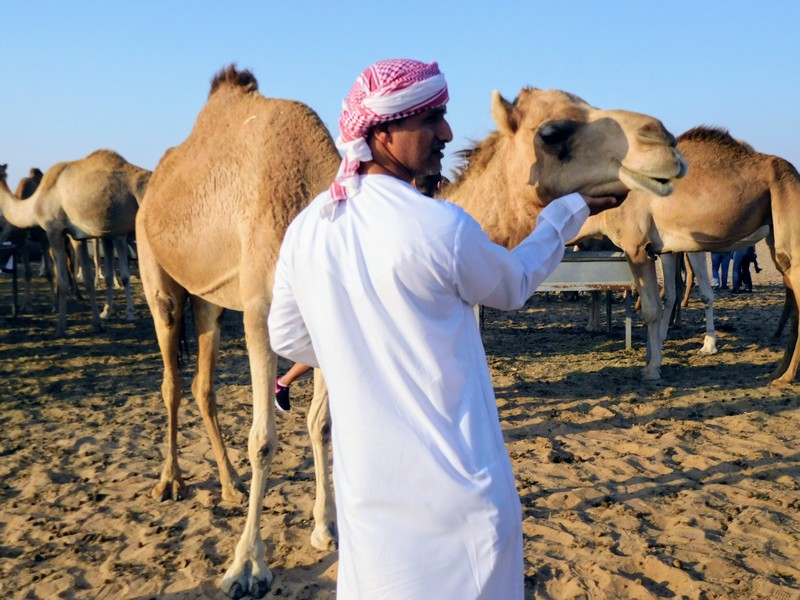
Camels in the Desert
After about an hour of these thrills, we drove on and came upon a herd of camels out there in the desert. We mingled with them and their owner who kept the food bins full because he said that they can get nasty. He and his family lived out here in the goat hair tent next to the camels, just like most of the Emerati did before oil was discovered and they moved into stucco houses in town. It’s apparent that there still are some Bedouins who prefer desert-living to the city, and this particular family has developed a good side trade catering to the tourists who stop by for photographs.
Finally we reached “camp”. Here there were all kinds of traditional activities to try out. You could play on the dunes, climbing them, boarding down them, or bashing in your own dune buggy. You could also ride a camel, hold a falcon on your arm, get a henna tattoo, and don traditional clothing (the long black hooded abaya the women wear and the white dishdashas the men wear) for a photo-op.
We enjoyed a beautiful sunset over the desert and, as the temperature dropped, many gathered around the fire that was flaming off to the side. Dinner was served, a typical Arabic meal of rice, hummus, tabbouleh, salad, grilled vegetables, and skewers of chicken and lamb. For some reason, they call it Lebanese food here in the UAE. Muslims do not drink alcohol, so out of respect for their tradition, most guests chose soft drinks and water.
Then a shockingly beautiful young woman came out to the Persian carpeted “stage” between our tables and performed a belly dance. She shook every part of her voluptuous body to the delight of the men in the audience and the envy of the women. I had trouble coming to terms with this and the modesty veils and long black dresses worn by most Muslim women to conceal their shape.
The evening ended poignantly. All lights were turned off and it became dark and quiet for about five minutes. We gazed in wonder at the brilliant stars at the desert sky above us. It was clear and cold and we were rewarded with a full moon.
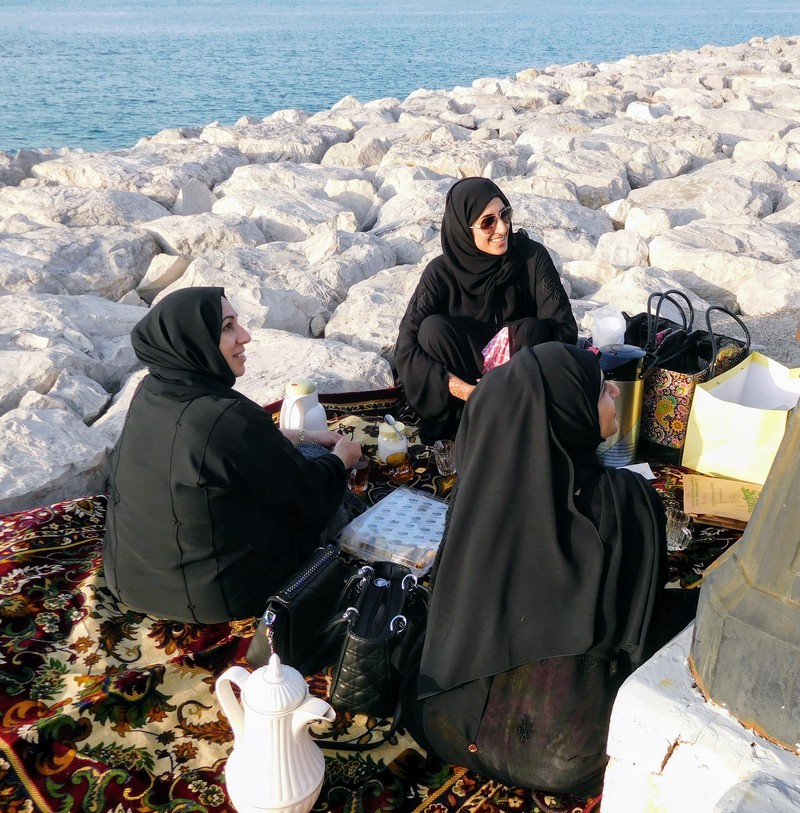
Picnic at waterfront in Abu Dhabi
The Carpet Souk
If you like set prices and leisurely browsing at your own pace, stay away from this area. I was here because (1) I was in the Middle East and this is part of their way of doing business, and (2) I was in the market for a carpet for my kitchen. I was particular, looking for colors to match my decor and a specific size to fit in front of my sink. So as I wandered into the area where all the carpets are sold, I thought maybe I’d find something here.
The carpet souk is housed in a one-story building surrounding a square. Eighty to one-hundred tiny shops open out to the square, and at this time of day, not much business was being conducted. Men in white dishdashas sat on the stoops waiting for customers and I was an obvious target.
One shop looked especially appealing with fine wool carpets made in Afghanistan and Pakistan. So after being invited and told that “it doesn’t cost anything to look”, I tentatively went in. I explained what I wanted and two men showed me dozens of carpets. I became somewhat uncomfortable as they disrupted their neatly folded piles and displayed carpets in many colors and sizes, none of which were suitable for my space.
At one time, I knew not to ask the price unless you find an item that you intend to buy because you will find yourself in a bargaining battle and it’s pretty tough to back out at that point. But, being curious, I asked the price of one carpet that was in the colors that I liked but not the size. I was in for the long haul. My sister whispered to me that this was a great price. I described the size I needed to the men, and they pulled out more smaller carpets but still not the dimensions or colors I was looking for. What didn’t they understand?
I spent about an hour there. I was invited to sit down and was offered tea. I discovered that they work in conjunction with neighboring shops, getting tea from one, carpets from others. Still no luck. Every time they went out, though, they returned with armfuls of carpets—always the wrong size and color but, as they said, “beautiful”. Finally we all concluded that there simply are no carpets made in the size I was looking for.
I left sweating profusely knowing that at least three or four shops had been dismantled by my shopping spree and that I was leaving empty-handed.
Women’s Handicraft Center
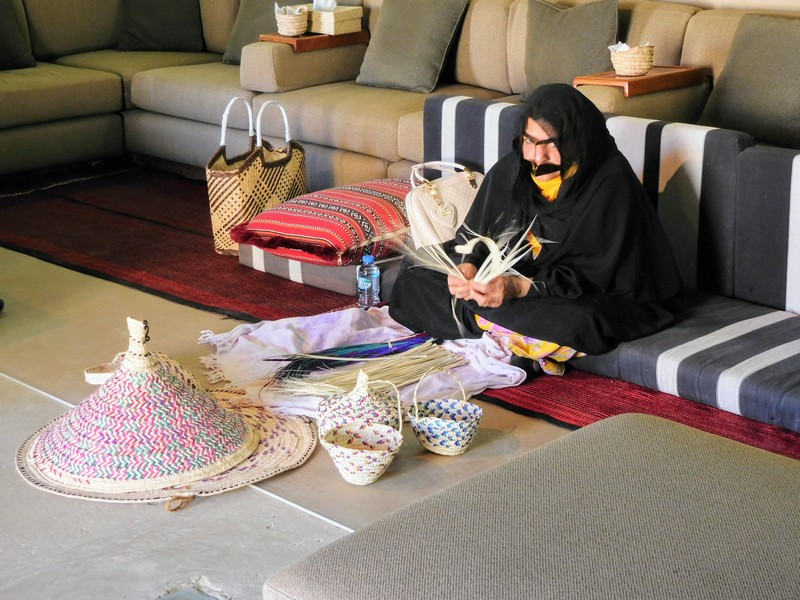
Women’s Handicraft Center
The government-run Women’s Handicraft Center is in a complex that consists of a large stucco building housing the “Women’s Union”, a playground for youngsters, an exhibition building and a series of little room-size buildings set in a nicely shaded palm grove where the women do their crafts. The security guard at the entrance took his job seriously, asked for ID, and looked me over carefully before giving his approval to pass through.
I removed my shoes at each little door and went into all five of the workshops. I was the only guest and felt both awed and intimidated. Most of the women were older and all were dressed in the traditional long black abaya and wore headscarfs. Their faces were also covered, either with a scarf or a niqaab, a black metal face mask typically worn by older Muslim women as a modesty veil. No English was spoken here. The women were doing the traditional crafts of the Bedouin desert dweller, and I imagine some of them were also doing these crafts in their goat hair tents before oil was discovered sixty years ago.
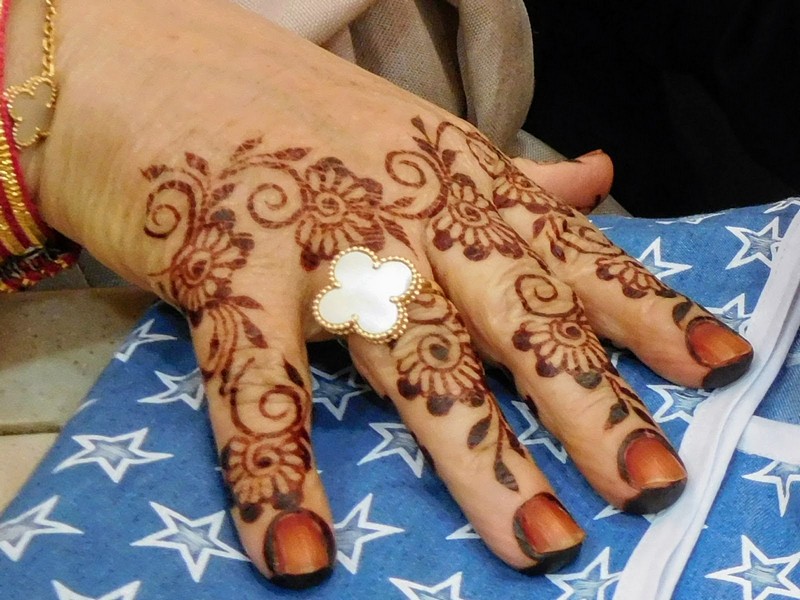
Henna
I watched them weaving textiles, sewing, doing needlework, and making pottery. They were enjoying each other’s company, talking, laughing and drinking coffee. I admired and appreciated their work. A middle-aged woman was making dresses for little girls. Ancient henna designs, a symbol of sensuality and celebration, ran down her fingers and onto the back of her hands and her nails were painted to match. She proudly displayed them in front of me.
This was a heart-warming experience. The women were pleased to show me their fine work and, even though no words were spoken, I felt welcomed by friendly eyes staring at me from behind covered faces.
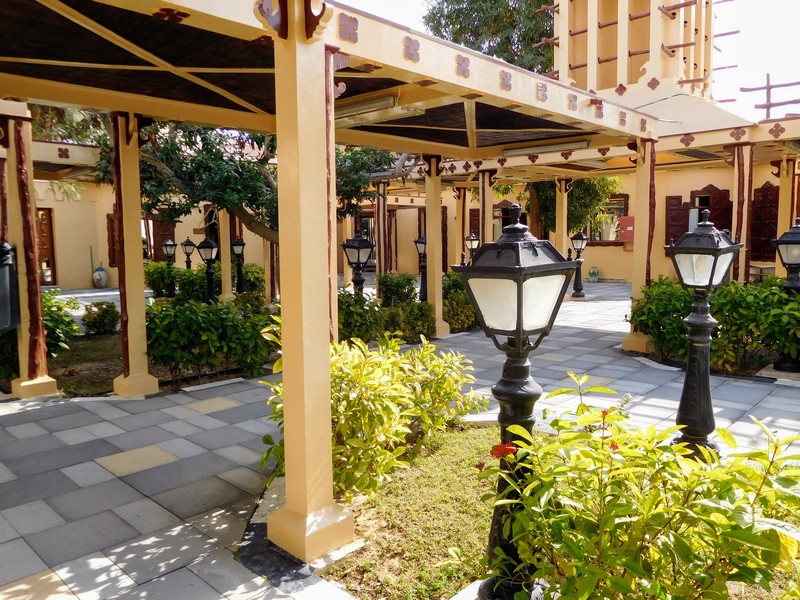
Women’s Handicraft Center
IF YOU GO:
Beach Rotana Hotel, 10th Street, Al Zahiyah Area (Tourist Club Area), Abu Dhabi, 45200 UAE
Abu Dhabi Falcon Hospital, P.O. Box 45553, Abu Dhabi, UAE, [email protected]
The Carpet Souq, Al Mina, in the port area along with the fruit and vegetable market, the fish market and the Iranian hardware market
Women’s Handicraft Center, Women’s Association Complex, Karama Street, Al Mushrif
Emirates Tours & Safari LLC, P.O. Box 51469, Abu Dhabi, UAE, [email protected], “Half-Day Desert Safari”
BIO
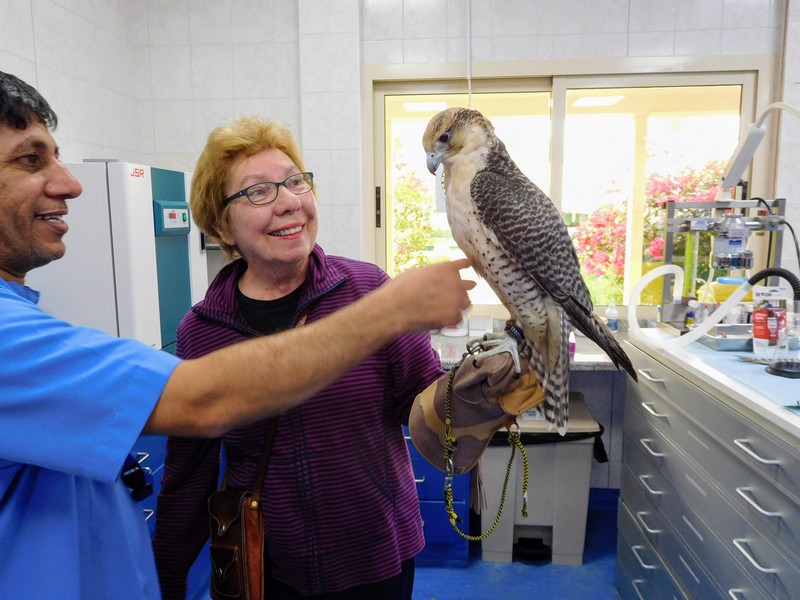
Elizabeth von Pier at the Abu Dhabi Falcon Hospital
Elizabeth von Pier is a retired banker and an avid traveler, photographer and writer. She has been published in the Los Angeles Times, In the Know Traveler, Go Nomad, WAVEJourney.com, Travelmag—The Independent Spirit, and Travel Thru History, and recently published her first book, “Where to Find Peace and Quiet in London.” Ms. von Pier lives in Hingham, Massachusetts.


